Animals in the Book of Mormon
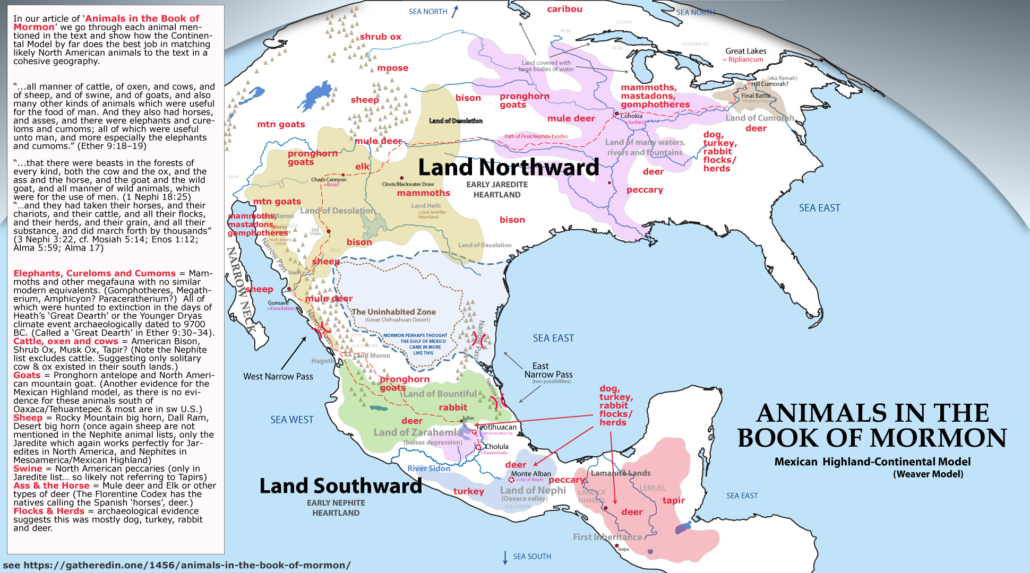
Many Book of Mormon critics try to show issues or anachronisms with the lists of animals found in its narrative; for example the Wikipedia articles on Book of Mormon Archaeology and Book of Mormon Anachronisms. The Book of Mormon certainly has its issues, but reading these animal issue attacks always seems strangely biased to me. In fact articles like this have so many blatant falsities that they’re a bit difficult for a well-read person to stomach and have been thoroughly debunked. However, to really do justice to the range of animals said to be found in the Book of Mormon one really must adopt a continental model for the Book of Mormon text, as several of the animals mentioned are found only in Western North America.
Throughout this article, keep in mind that our model places the Nephites primarily in the Mexican Highland, the Land of Nephi in the Oaxaca highland (Monte Alban), the Lamanite heartland in Chiapas & the Yucatan and the Nephite ‘Land Northward’ and Jaredites primarily in the U.S. Southwest, Northwest Mexico and the Eastern U.S.— the early Jaredite record being an abridged oral & channeled history spanning from the Ice age to the Nephite era.
The Book of Mormon makes clear that both Jaredites and Nephites who lived in ancient times on this continent had domestic animals of various kinds. They also speak of wild varieties of presently domesticated animals. The earlier people, the Jaredites (unknown beginning to ~300 B.C.), are reported to have had,
all manner of cattle, of oxen, and cows, and of sheep, and of swine, and of goats, and also many other kinds of animals which were useful for the food of man. And they also had horses, and asses, and there were elephants and cureloms and cumoms; all of which were useful unto man, and more especially the elephants and cumoms. (Ether 9:18–19)
The Nephites (c. 600 B.C. – 400 A.D.) on the other hand tell us,
that there were beasts in the forests of every kind, both the cow and the ox, and the ass and the horse, and the goat and the wild goat, and all manner of wild animals, which were for the use of men. (1 Nephi 18:25)
“…and they had taken their horses, and their chariots, and their cattle, and all their flocks, and their herds, and their grain, and all their substance, and did march forth by thousands” (3 Nephi 3:22, cf. Mosiah 5:14; Enos 1:21; Alma 5:59; Alma 17)
From these lists its clear that, if true, the Book of Mormon translators, like Spanish Chroniclers of the sixteenth century, employed a dynamic equivalence technique in their translation of animals. Translating the ancient animals into analogous animals Joseph Smith and early Americans would recognize. Its also quite likely that Mormon as an ancient translator and compiler projected some of his own ‘Land Northward’ (Desolation) understanding of North American animals onto the ancient texts from Mesoamerica that he was transcribing. The types of animals in each list consequently might tell us something about the locations these groups lived.
Elephants
Note that Elephants are in the list for animals ‘useful’ for the early Jaredites. And the only elephants found in the archaeological record of North America are Mammoths. So although it is true that just like there is no archaeological evidence of the War Elephants involved in Hannibal’s crossing of the Alps or many other written histories. It is possible that the Jaredite Elephants were brought her and used for work, but left no evidence in the archeological record. Which is certainly possible. However, given that they are mentioned in the Book of Mormon with two other assumedly extinct animals (cureloms & cumoms which had no modern analog to translate the ancient words to), it seem likely that these actually are speaking of Mammoth and other extinct megafauna.
The problem is that with the exception of small island pockets, and a few DNA samples in Northern Alaska, evidence for the extinction of remaining North American Elephants (Mammoth & Mastodon) and other megafauna during the Younger Dryas climate event by the radiocarbon dates of ~10,000 BC is overwhelmingly conclusive. This requires that the early Jaredite record was older than most people believe. (Perhaps including the Book of Mormon authors themselves?) Unless radiocarbon dates for that highly variable climatic period are somehow wrong, it seems likely that the Jaredite record (much like the Biblical & Babylonian records) may have presented spliced or fragmented genealogies in a condensed, linear form leading back to the ancient Babel tower myth where mankind spread throughout the globe. (In other words there is likely missing time that is not accounted for in the record.) The mention of elephants and other extinct animals, along with the obvious fact that the Book of Mormon tells us the Jaredites were the first inhabitants of this continent is the most striking evidence for our correlated timeline which correlates the early pre-dearth Jaredites with North American Paleo-Indians living prior to the end of the ice age. (The “dearth” in Ether 9:30 being the younger dryas: a massive episode of climate change ending the last ice age cycle.) Because of the mention of elephants as well as two other apparently extinct megafauna which were “especially useful [for the food of] man”, correlating the Paleo-Indian with the archaic cultures of North America is really the best plausible correlation. This is certainly plausible since the record itself does not give any concrete dates for the Jaredite culture (only a genealogy table). There are literally thousands of archeological sites showing that the Clovis and Paleo-Indians lived on diets rich in megafauna. Many archaeologists have in fact suggested that these native American groups may have been responsible for hunting many of these animals to extinction. This highly debated theory gives a lot of weight to the idea given in the book of Ether where it states that BOTH a climate event and hunting did them in.
30 And it came to pass that there began to be a great dearth upon the land, and the inhabitants began to be destroyed exceedingly fast because of the dearth, for there was no rain upon the face of the earth.
31 …And it came to pass that their flocks began to flee… towards the land southward, which was called by the Nephites Zarahemla…
34 And it came to pass that the people did follow the course of the beasts, and did devour the carcasses of them which fell by the way, until they had devoured them all. (Ether 9:30–34)
Cureloms and Cumoms
Many other extinct Pleistocene megafauna fit the description of Jaredite animals mentioned in the Book of Mormon. Paleoindians were known to subsist on Gomphotheres and perhaps even giant sloths; short-faced bears; several species of tapirs; saber-toothed cats like smilodon; dire wolves; saiga; camelids such as two species of now extinct llamas and camelops. Since it is generally accepted that “cureloms and cumoms” were especially “useful for the food of man” (Ether 9:18–19), and unknown to Mormon in translation (not necessarily Joseph Smith), I think the most likely candidates are the gompothere, giant sloth, wooly rhino or camelids.
18 …and also many other kinds of animals which were useful for the food of man.
19 And they also had horses, and asses, and there were elephants and cureloms and cumoms; all of which were useful unto man, and more especially the elephants and cureloms and cumoms.
See even Alexandar Von Humbodt’s 1814 publication which references an ancient native illustration of an animal with ‘a trunk, figured in the Codex Borgianus‘. From which he rightly hypothesizes on the native memory of some extinct species “which from the configuration of its trunk holds the middle place between the elephant and the tapir.” (p.212 Researches concerning the institutions & monuments of the ancient inhabitants of America)
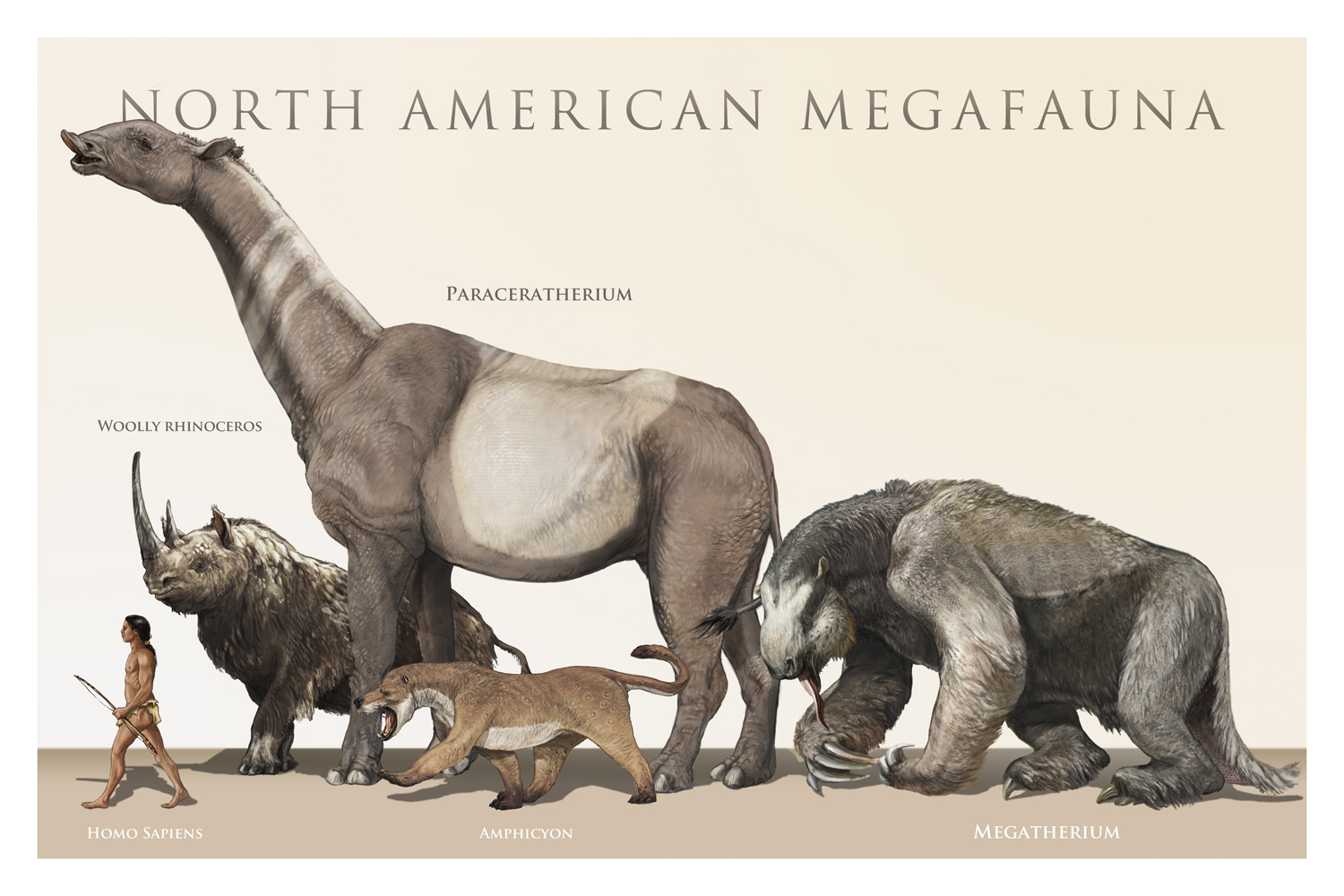
A few of the many North American megafauna which co-existed with the paleoindians. (nearly all of which went extinct at the end of the ice age (which we correlate with the “great dearth” spoken of in the Book of Mormon).
Cattle, Oxen, and Cows
Concerning the Jaredite “cattle, of oxen, and cows” mentioned in Ether 9:18, likely matches would have to be American Bison (subfamily Bovinae/bovine), shrub ox (family Bovidae: went extinct with other megafauna); Harlan’s muskox (family: bovidae, subfamily: caprinae), Moose (family Cervidae, could have been classified as either cow or horse by Mormon/Ether depending on their cultural classification system) and for Mesoamerica and 1 Nephi 18:25, Baird’s Tapir which is locally known as the “Mountain Cow”. Each of these species ranged far south of their current habitat during the last Ice Age. There is of course no evidence for moose or shrub ox in Mexico, so the only option for the Nephite list is Bison as an Ox, which historical accounts put as far south as Zacatecas (Lst et. al 2007); and Tapir, perhaps as a swine or cow type animal. (It’s certainly nothing like a horse! LOL) And since the Nephite list excludes “cattle” we can assume they were not yet familiar with cows as a herd animal (such as Bison herds on the plains) at the time 1 Nephi 18:25 was written.
Early Spanish explorers like Cabaza de Vaca with native interpreters also called Bison cows in his dairy saying,
“They described some cows which, from a picture that one of them had painted on his skin, seemed to be cows, although from the hides this did not seem possible, because the hair was woolly and snarled so that we could not tell what sort of skins they had.” (The Narrative of Alvara Nunuz Cabeza de Vaca. Ch 12. v. 1)
Ichnofossil evidence of Bison has been found as far south as the Acahualinca track site in Nicaragua from around the time of Christ. Lockley et al, 2008, found the following.
Williams (1952, p. 6) also stated that there was “the trackway of a bison in a layer of volcanic mudstone in the quarries of El Recreo, approximately 2.5 km south of El Cauce.” He illustrated these bison tracks (Williams, 1952, fig, 11b, e), and, based on them, inferred an age older than 2000 BP, reasoning that bison bones were not known from archaeological sites of, or younger than, that age in Nicaragua, so they must have been extinct by then. Williams (1952, fig. 11c) also illustrated deer tracks from Acahualinca
Goats
Possibilities include North American Mountain Goats. (Our current scientific classification system does not include this animal in the Capra genus with most goats, but Joseph or Mormon could have very well have been referring to this type of animal).
The Nephite animal list differentiates between “goats and wild goats”. Although modern botanists classify North American antelope into a different family than goats (Antiloocapridae vs. Bovidae), you can see how similar the the two animals look. Antelope were known to be a major food staple of assorted Mesoamerican groups like the early Zapotecs ranging as far south as Oaxaca during the archaic period. More recently their range stops near the valley of Mexico, although disease has nearly caused their extinction in many areas since colonial times. This may very well be the wild and non-wild goat that the Nephites were referring to. Since the range of North American Mountain Goat does not seem to stretch far south of the US border into Mexico, it may be that Mormon as a translator of Nephi’s writings projected his own understanding of the animals of his region (north-most west Mexico & Southwest US) on the record.

North American/Mexican pronghorn antelope (left) compared to both European and Middle Eastern varieties of goats (middle and right).
Sheep
Many species of wild sheep are indigenous to north america. Including Rocky Mountain big horn, Dall Ram, Desert big horn. See wild sheep of north america for details. Note that sheep are not mentioned in the Nephite animal lists, only the Jaredite. This is fitting since, unlike antelope (goats) and bison (cows), no North American sheep are known to have ranged very far south into Mexico.
Spanish Explorer Cabaza de Vaca who after being marooned in the New World lived with the Natives many years claimed that the hills around Sinaloa contained both indigenous “sheep and goats”.
“Between Suya and Chichilticalli there are many sheep and mountain goats with very large bodies and horns. Some Spaniards declare that they have seen flocks of more than a hundred together, which ran so fast that they disappeared very quickly” (The Narrative of Alvara Nunuz Cabeza de Vaca. Ch 2. v. 5)
Don Joan Suarez de Peralta reported between 1635 & 1540 that explorer Friar Marcos gave an account of the natives of New Mexico saying that,
“in the city of Cibola… the houses were very fine edifices, four stories high; and in the country there are many of what they call wild cows, and sheep and goats and rich treasures… the people in that country very prosperous, and all the Indians wearing clothes and the possessors of much cattle; the mountains like those of Spain, and the climate the same. For wood, they burnt very large walnut trees, which bear quantities of walnuts better than those of Spain. They have many mountain grapes, which are very good eating, chestnuts, and filberts…. For game, there were partridges, geese, cranes, and all the other winged creatures—it was marvelous what was there. And then Suarez adds, writing half a century later, ‘He told the truth in all this, because there are mountains in that country, as he said, and herds, especially of cows. . . . . There are grapes and game, without doubt, and a climate like that of Spain.”” (The Coronado Expedition, George Winship. p.365)
Although many of the details of the accounts of Fray Marcos are fanciful, one must note that the grouping of the known “wild cows” (or bison) which is historically validated might add validity to the possibility that the native Zuni really did have some kind of domesticated “sheep & goats”.
Another witness named Andrés Garcia, accounted a second hand account from Frey Marcos which agrees with the details above saying more of seeing the earliest pre-conquest Natives of New Mexico possessing both cows [bison], sheep and partridges [quail/pheasants].
“they wear coarse woolen cloth and ride on some animals, the name of which the witness did not know… the cities were surrounded by walls, with their gates guarded, and were very wealthy, having silversmiths, and that the women wore strings of gold beads and the men girdles of gold and white woolen dresses; and that they had sheep and cows and partridges and slaughterhouses and iron forges.” (ibid, p.366)
Again we must ask ourselves if these accounts are exaggerated hearsay, or if the early southwest natives successfully hid their riches and animals to all but the earliest Coronado & Marcos expiditions.

A few of North America’s native sheep species include (shown from left to right above) the Peninsular Ram, the Dall’s sheep the Peninsular Ram and the Rocky Mountain Ram.
Swine
Note this is not mentioned in the Nephite list of animals, only the Jaredite list.. Perhaps because many of the larger ranging North American peccaries (Including the long nosed and flat-headed peccaries) went extinct with other megafauna. Pigs (family Suidae) are not native to the Americas, however peccaries, which are native to the Americas (family Tayassuidae) have roamed limited parts of the continent since the demise of their relatives at the end of the ice age. Collared peccary, referred to as ‘wild boar’ in the Codex Mendoza, composed a major part of Oaxacan Zapotec diet into the classic era. Tapirs are also somewhat reminiscent of pigs. They are prevalent in central America and grow to be six and a half feet in length and can weigh more than six hundred pounds. Many zoologists and anthropologists have compared the tapir’s features to those of a cross between a pig and a cow.

Extinct North American peccary (shown left), living North American dessert javelina (center), and Mesoamerican jungle peccary (right).
Ass & the Horse
Horses aren’t specifically mentioned in the Book of Mormon as being the type of animal that carried people. In fact in the instances that they are mentioned in relation to “chariots”, the wording could easily be referring to some type of supply slay (3 Nephi 3:22; Alma 18:9–12). So its actually pretty plausible that the Book of Mormon translators used the biblical/European word “horse” to refer to a different type of native animal. Just as Reindeer are the “horse” of Norse peoples, it seems fairly possible that the purported Book of Mormon channelers translated words for White-tale and Mule Deer (or even Elk, North American caribou or moose for those living farther north) in instances it was used. Note this is exactly what was done by early Aztec writers, as Sahagún in his Florentine Codex calls the Spanish horses “deer”. (see Bk 12, Ch. 1 par. 7 & Bk 12 Ch. 7 par. 8) In fact in the second instance Sahagún’s reference to the Aztec calling the Spanish horses “deer”, the wording sounds as though they were somewhat familiar with the idea of deer in warfare as supply animals but completely amazed by deer which were strong and tall enough to actually carry a man.
Their deer carry them upon their backs. They are as high as rooftops. (Sahagún, 1545-1590)
Moctezuma took it as a great and evil omen when he saw the stars and the mamalhuaztli. And when he looked at the bird’s head a second time a little further, he saw a crowd of people coming, armed for war on the backs of deer… (The Florentine Codex, Book 12)
In fact, both elk and deer have been readily domesticated in modern times. Elk farming in North America has become increasingly popular in recent years and Siberian natives have been domesticating elk and deer for thousands of years. Europeans also have occasionally domesticated deer for hundreds of years. (Although they don’t tend to stay domesticated long.) Deer in most national parks and many urban settings as well as Elk in National Parks such as the Grand Canyon and Yellowstone have become so docile as to cause problems by their constant dependence and interaction with people. There are even numerous historic images of old cowboys riding elk. It seems logical that if many Nordic cultures could get a caribou to pull a sleigh then it is certainly plausible that some talented ‘deer whisperers’ could train a strong mule deer to pull a ceremonial supply ‘chariot’ as mentioned in Alma 18:9–12. I also find it interesting that settlers named the deer species O. hemionus “Mule Deer” because the animals large ears reminded them so much of a Mule or Ass. Deer are incredibly common in Mexico and even provided a main source of food for cultures as far south as the Yucatan Peninsula and Guatemala.
In fact, in the next section an example from an early Spanish historian is given of the kings of the valley of Mexico fencing in herds of deer.
The idea that Book of Mormon references to “horses” refereed to tapirs, is far too much of a stretch in my opinion. I’m not sure why anyone would suggest such a thing when there are such better alternatives.
Flocks & Herds
The Book of Mormon makes frequent mention of “flocks and herds”. In addition to the animals mentioned above it is relevant to note that archeological evidence shows that many Mesoamerican peoples bred, raised and subsisted on animals such as dog, turkey, rabbit and deer. Archaeological evidence indicates dogs and deer were a substantial part of the Mayan diet. In fact, at the Colha site, white-tailed deer accounted for up to fifty percent of the Maya meat source. Likewise, Zapotec cultures relied heavily on deer and domesticated dog and turkey. It makes sense that, many of the references to “flocks and herds” may be referring primarily to these animals. Early Zapotec peoples are also known to have subsisted on antelope— of which similar species have been readily domesticated in various areas of Asia and Africa. Peccary and tapir are also well known indigenous animals which could have been primary components of Book of Mormon “flocks and herds”. Although evidence for animal domestication in Mesoamerica is hard to come by, this may well be because it is often difficult, if not impossible, to tell the difference between a wild animal and a domesticated animal from archaeological food remains.
The early Spanish chronology Mariano Veytia in his “Ancient History“ talks about the ancient emperors created fenced enclosures for deer & other animals,
“Nezahualcoyotl… gathered a large stash of materials, and prepared a large number of workers; and seeing the site of Chapoltepec as suitable for a hunting forest, he ordered it to be formed, fenced, and stocked with deer, rabbits, hares, and other animals, allocating it as a place of amusement” (Ancient History, p.142)
No evidence of these fences have been found by archaeologist… almost certainly because they were made of reeds or some other highly perishable material.
A study on The archaeology of Mesoamerican Animals food uses in the Valley of Oaxaca (my Land of Nephi) list the following animals as major food staples throughout the early to late formative and early classic periods. Collared peccary, gray fox, raccoon, ringtail spotted skunk, long-tailed weasel, nine-banded armadillo and opossum, ducks, band-tailed pigeon, mourning dove, guan, Montezuma quail, coot, raven finches and Turkey. (see, Animal Economies in prehispanic southern Mexico, Gotz & Emery). Also antelope & Jackrabbits (ref).
The essential Codex Mendoza mentions many of these same animals being utilized by the natives at the time of the conquest both for local food and tribute to the Aztec capital. It states,
the lowlands [of the Valley of Oaxaca were] pleasant enough to support crops of sweet potatoes, xicamas, and various fruits, and the piedmont conducive to exploiting mesquite, maguey, and prickly pear cactus (ibid.; Paddock 1966:42). This last plant served as host for the tiny dye-producing cochineal insects. Wild animals and birds [turkey], ranging from deer and wild boar in the mountains to macaws, parrots, and rabbits in the lowlands were plentiful…
De Soto speaks of indigenous tribes having major food staples of rabbits and partridges, dogs, and turkeys. (Ch.13.p168.)
Plains herds of bison, elk, deer, and antelope historically ranged into Texas, New Mexico and well down into northwest Mexico. The early Spanish explorer Onate, like many early explorers described the Bison and cattle and compared the ‘deer’ (actually elk) to horses.
…nearly every day and wherever we went as many cattle came out as are to be found in the largest ranches of New Spain and they were so tame that nearly always, unless they were chased or frightened… All these cattle are of one color, namely brown, and it was a great marvel to see a white bull in such a multitude. Their form is so frightful that one can only infer that they are a mixture of different animals… This river is thickly covered on all sides with these cattle and with another not less wonderful, consisting of deer which are as large as large horses. They travel in droves of two and three hundred and their deformity causes one to wonder whether they are deer or some other animal. (Spanish exploration in the Southwest, 1542-1706, Herbert Bolton, p255)
Another early Spanish account tells of how the plains indians used large dogs as pack animals such Europeans might use mules.
In these [midwestern US] plains dwell the… Querechos, the vaqueros. [Apache cow herders]. They imitate the gypsies [nomads of Europe] in having little stability of permanence of location. Ordinarily they go from one place to another taking with them all their property loaded on droves of dogs the size of the large mastiffs of Castile. They equip them with pack saddles of cowhide and load their leather tents [Teepees] on them. These dogs carry the tents, poles, and other implements; likewise the the household goods, supplies, meat and foodstuffs in quantities of almost four arrobas [100 lbs each]. They have many of them. (Obregón’s history of 16th century explorations in western America, available here)
Below is an example from Nara deer park in Japan, of how easy it is to partially domesticate wild animals… you simply need to give them a reliable food source.
Although it is certainly possible that the Book of Mormon was written by Joseph Smith or one of his contemporaries, instead of being channeled from heaven or translated from an ancient record–the supposed animal “anachronisms” are not a very solid argument against its authenticity.
Domesticating Deer. Nora Deer Park, Japan
Video of man attempt at Riding Elk
Video of man attempted Moose Ride
Video of domesticating Antelope
A little detail behind why the only animals that Native American’s had much success Domesticating were, turkey, dog, and possibly deer & bison on a more limited basis.
Could Extinct Fauna Be Misdated?
It seems very unlikely that horses existed in the America’s at the time of the conquest. Since reading records from the conquest era such as Cortez Journal, De Soto’s expedition or Coronado’s expedition, shows that NOT a single horse was seen. Over and over the natives were absolutely dumbfounded by the Spanish horses, with an understanding of the advantage these animals gave the conquistadors. Literally one armored horse-conquistador could take on a hundred natives. (in the Chichimec revolt of ~1550 AD, 200 horseman win 15k revolting natives.) De Soto looses some of his 300 horses between 1539-1543 (ends expedition with less than 10). Even De Ibarra, (who witnessed wild horses in Sonora in the 1560s), talks about over 200 mules that they brought into west Mexico a decade earlier bred in Mexico city. He also says that during the Durango revolt in 1565, the natives “stole or killed between 200-400 horses”, showing how quickly the Spanish inundated Mexico with horses and livestock from the old world making it unsurprising that accounts of wild horses begin showing up in the New World within 100 years of the conquest of Mexico. (These accounts are supported by archaeological and genetic evidence found here)
That said, it is at least of interest to note how the distribution of evidence for pre-conquest horses (all supposedly dated to ice-age times) seems to line up with my Book of Mormon model. It is also noteworthy how many of these horse bones and teeth were dated using Uranium series dating (which always gives ice-age dates) instead of radiocarbon dating. Many books and papers (Collin, 2017) have detailed native hearsay evidence of pre-Columbian horses.
Is it possible that some of these Uranium series dates are wrong? Is it possible that a single species survived from Ice Age times but could only survive with human help in very specific ecological zones? (Perhaps subsisting on specialized foods, more like Zebra or Caribou & lichens; likely living on the roots, fruit, shoots or even bark of one specific type of Yucca-like food souce — given that their remains are only found in desert highlands where plants like Yucca-Mixtecana are previlent.) Is it possible that a few isolated native tribes did have horses, but successfully had women & children run away on their horses and hide from post conquest Europeans? The answers to these questions may come with advances in genetic testing of current and future equid/horse bone findings. (Such as evidence of Pleistocene N.Amerian horse trace DNA found in both N.American horses and Iberian & Siberian hoses from as recent as 2000 BC, see Taylor, Librado, et al)
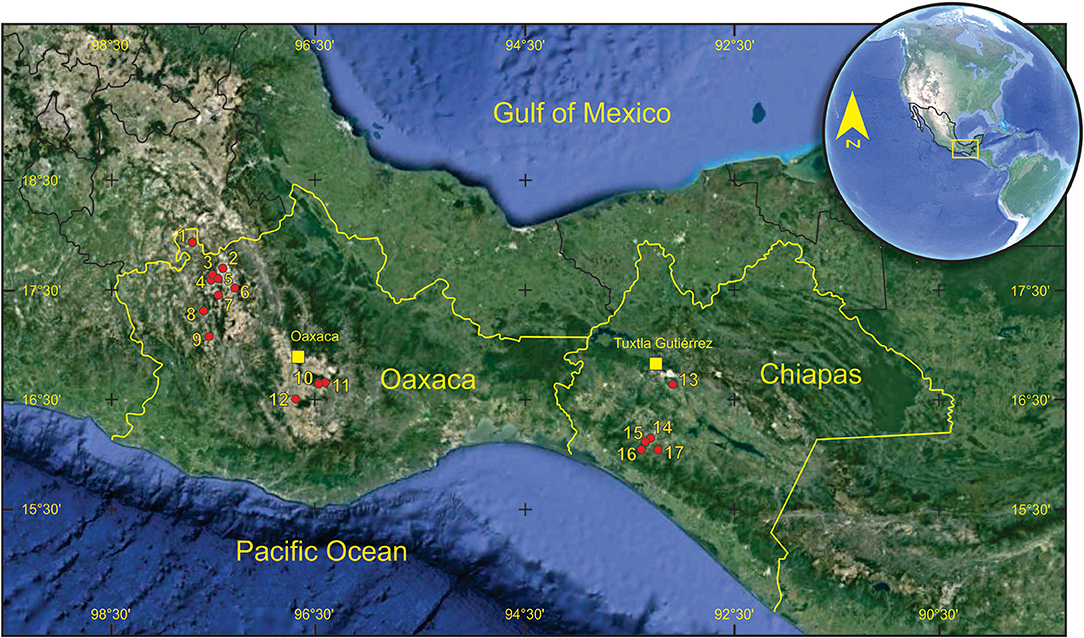
Main Late Pleistocene equid localities from Oaxaca and Chiapas. Taken from “Species Diversity and Paleoecology of Late Pleistocene Horses From Southern Mexico” by Jimenez-Hidalgo, et all, 2019. Note how the locations match the land of Nephi and land of First Inheritance of the Unified Continental Model.
Note from the above article that three dominate horse species are found in American fossil evidence. The three range from the size of a Shetland Pony to the about size of an average European horse of around 750 pounds–with whole skulls being found. Sometimes they are found in association with mammoths, mastodons, camels and other ice age fauna, but in Oaxaca, the paper says they are found in conjunction with American Bison and Pronghorn Antelope! Both animals the Book of Mormon suggests were in Oaxaca at Nephi’s landing.
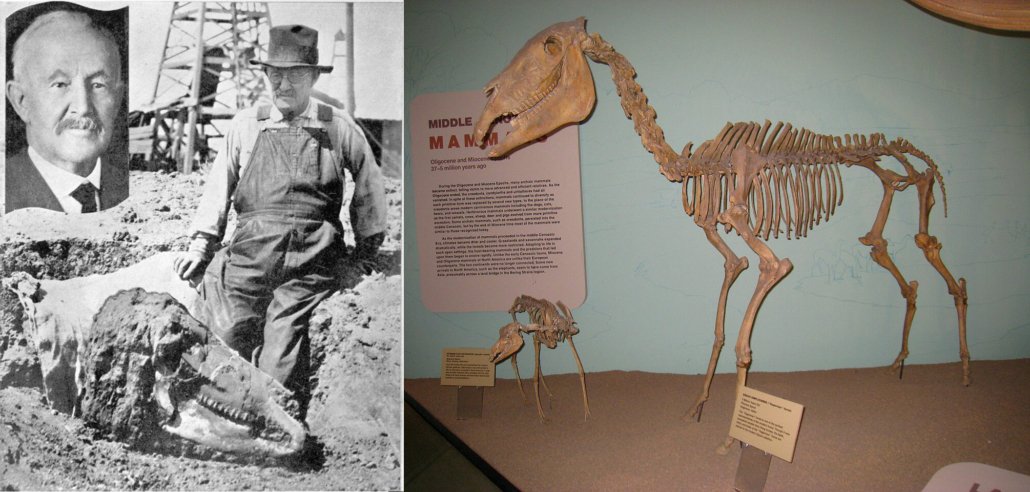
Paleontologist Charles H. Sternberg collecting a large Pleistocene horse skull in 1926-27 from tar pits at McKittrick oil field, just west of Bakersfield, California.
.
Summary of Points
So in summary. There seems to be a lot of inconsistent thinking when it comes to animals in the Book of Mormon and particularly, Jaredite animal lists.
Elephants are only mentioned very early in the Jaredite timeline. And they are mentioned after “cattle, oxen and cows” as well as “sheep, and of swine, and of goats”, and in conjunction with 2 animals with no modern translation.
-So if the Book of Mormon “elephants” are tapirs… what are “swine, and cattle, oxen and cows”
-If b.o.m. Cureloms and Cumoms are alpacas, what are “sheep and goats and horses?”
-if b.o.m. Elephants are mammoths that held out (with ZERO archaeological evidence) in some isolated pocket until 1800 BC, then what are “Cureloms and Cumoms”? And why didn’t Mormon translate these words?
-If b.o.m. Elephants, Cureloms and Cumoms still existed into Nephite times don’t you think they’d be mentioned in the Nephite animal list of 1 Nephi 18:25; cf. Mosiah 5:14; Enos 1:21; Alma 5:59?
The record states that after the climate catastrophe/dearth, ” the people did follow the course of the beasts, and did devour the carcasses of them which fell by the way, until they had devoured THEM ALL” (Ether 9:30–34)
I’ve found nearly all articles trying to correlate these Book of Mormon animals with real American animal groups are HIGHLY inconsistent over either geographic region or time or both.
Really the best and perhaps only way to resolve these inconsistencies, and still consider the translation of the Book of Mormon to be divine where higher beings are attempting to match ancient animals with their available modern counterparts is to suggest that Elephants are Mammoths, Cureloms and Cumoms are two other genre or species of extinct megafauna (Gomphotheres are a good possibility for one), and that the ‘dearth’ is the Younger Dryas extinction event which, along with over hunting, killed off most megafauna in the Americas.
https://beta.capeia.com/…/disappearance-of-ice-age…
To make these lists work, also requires accepting that the Jaredites ranged into North America… not just Mesoamerica or South America… as otherwise, there are just not enough good matches to “cattle, of oxen, and cows, and of sheep, and of swine, and of goats, and also many other kinds of animals which were useful for the food of man… also horses and asses and elephants…
-Elephants = Mammoths
-Cureloms and Cumoms = Extinct megafauna with no similar modern equivalents. (Gomphotheres, Megatherium, Amphicyon? Paraceratherium?)
-Cattle, oxen and cows = American Bison, Shrub Ox, Musk Ox, Tapir (Note the Nephite list excludes cattle, suggesting they were not associated with herds of cow. Which makes sense if they were mainly in Mesoamerica where there were no large bison herds.)
-Goats = Pronghorn antelope and North American mountain goat. (Another evidence for the Mexican Highland model, as there is no evidence for these animals south of Oaxaca/Tehuantepec. Historically Mexican Pronghorn ranged to Hidalgo and the Valley of Mexico, and given their habitat very likely ranged the Mixteca Alta to Oaxaca, but unlikely any farther south as they require dry grasslands).
-Sheep = Rocky Mountain big horn, Dall Ram, Desert big horn (once again sheep are not mentioned in the Nephite animal lists, only the Jaredite which again works perfectly for Jaredites in North America, and Nephites in Mesoamerica/Mexican Highland)
-Swine = North American peccaries (only in Jaredite list… so likely not referring to Tapirs)
-Ass & the Horse = Mule deer and Elk or other types of deer (The Florentine Codex has the natives calling the Spanish ‘horses’, deer.)
Flocks & Herds = dog, turkey, rabbit and deer.
Thus a verse like Enos 1:21 which says,
21 And it came to pass that the people of Nephi did till the land, and raise all manner of grain, and of fruit, and flocks of herds, and flocks of all manner of cattle of every kind, and goats, and wild goats, and also many horses.
after noting that the 1828 dictionary defines cattle as “Beasts or quadrupeds in general, serving for tillage, or other labor, and for food to man”, we can assume that from evidence found in a place like Monte Alban (my city of Nephi) that the flocks and herds [of cattle] were mostly turkey, dogs, deer, antelope and some type of goat which has not yet been attested in the mesoamerican archaeological record but is found in Northern Mexico, Baja and the US Southwest.
.
.
Plants & Crops in the Book of Mormon
Much like animals, the Book of Mormon mentions several domesticated plant varieties which have often been seen as anachronistic. one such example is this verse in Mosiah 9 speaking of the Nephites who return to the land of Nephi.
9 And we began to till the ground, yea, even with all manner of seeds, with seeds of corn, and of wheat, and of barley, and with neas, and with sheum, and with seeds of all manner of fruits; and we did begin to multiply and prosper in the land. (Mosiah 9:9)
Although corn is known to have been domesticated exclusively in the Americas, and neas & sheum are unknown (untranslated) varieties of foods, wheat & barley have often been called anachronistic and unknown in the Americas before colonization. However…
Native Barley
Of Barley, the Book of Mormon says,
22 And all this he did, for the sole purpose of bringing this people into subjection or into bondage. And behold, we at this time do pay tribute to the king of the Lamanites, to the amount of one half of our corn, and our barley, and even all our grain of every kind (Mosiah 7:22)
7 A senum of silver was equal to a senine of gold, and either for a measure of barley, and also for a measure of every kind of grain. 15… a shiblon for half a measure of barley. (Alma 11:7,15)
 Hordeum pusillum, also known as little barley, is an annual grass native to much of the United States and southwestern Canada. It arrived via multiple long-distance dispersals of a southern South American species of Hordeum about one million years ago. Its closest relatives are therefore not the other North American taxa like meadow barley (Hordeum brachyantherum) or foxtail barley (Hordeum jubatum), but rather Hordeum species of the Pampas of central Argentina and Uruguay. It is less closely related to the Old World domesticated barley, from which it diverged about 12 million years ago. It is diploid.
Hordeum pusillum, also known as little barley, is an annual grass native to much of the United States and southwestern Canada. It arrived via multiple long-distance dispersals of a southern South American species of Hordeum about one million years ago. Its closest relatives are therefore not the other North American taxa like meadow barley (Hordeum brachyantherum) or foxtail barley (Hordeum jubatum), but rather Hordeum species of the Pampas of central Argentina and Uruguay. It is less closely related to the Old World domesticated barley, from which it diverged about 12 million years ago. It is diploid.
Coincidentally, evidence suggests domestication took place in the southeastern and southwestern United States (Livingston, 2010). Evidence of its domesticated use as a food staple was first discovered in 1983 among the Hohokam of Arizona, and has since been found at the Gast Spring site in Iowa as well as many other sites (Dunn & Green, 1998). To the Hohokam culture in Arizona, archeological evidence suggests that little barley was used for trade between other [southwest] tribes whose diet did not normally include domesticated little barley (Minnis, 2016).
Many articles exist which follow Tyler Livingston’s logic of showing the connections between the cultures of the US Desert Southwest and those of the Eastern US and Mexico. These include Mesoamerican ballcourts, caged McCaw, shells and abundant evidence of Cacao to once again suggest that Mormon may have projected his local ‘Land of Desolation’ crops onto the rest of the Book of Mormon (as the southwest is likely the only area with all foods mentioned in the Book of Mormon. Note that Chia seeds mentioned below were used as both money and religious festivals much like Barley was in Israel.
Wheat
Native Americans used the seeds of many types of grasses which were comparable to wheat. Wheat being differentiated from Barley in that wheat is usually milled into a flour while barley is eaten as a whole grain or in pearled form. Seeds used in mills by Native American’s included grasses like Indian Ricegrass, Little Bluestem, Sideoats Grama, Galleta, Sand Dropseed, and Alkali Sacaton as a food source, with Indian Ricegrass being a particularly important staple for tribes in the Southwest, where its seeds were gathered, processed, and cooked into various dishes like porridges and breads.

Amaranth grain (left) and wheat (right)
Two other grass seed possibilities known to form a significant portion of ancient central Mexican peoples is Amaranth seeds and Chia seeds. “Chia was one of the four main crops of the Aztec civilization along with beans, corn, and amaranth. The first recordings of chia being cultivated date back to 3500 BC. Chia was ground down and used to make a flour to bake bread, mixed with a sweet syrup called maguey and also as a nourishing broth. There are also recordings of special dishes being prepared with chia to be used in religious festivals and celebrations. Chia was viewed as such a valuable and nutritious food that it was used as a currency to barter for other essentials. The Codex Mendoza specifically mentions Oaxaca as a region which provided tribute to the Aztec capital with small seeds thought to be Chia (Berden, p.108). Apart from a food, chia was seed as a medicine and prescribed for a huge number of ailments and to improve health and vitality” (Miller, 2024, see also Rozanne Stevens, accessed 2024)
Sheum
Interestingly, the term Sheum is used in the Book of Mormon as a grain presumably gathered by the ancient Americans with a name that seems strange that young Joseph Smith would use. As it is an actual ancient Assyrian term used at various times to refer to grains generally, and even pine nuts (see Assyrian Dictionary of OIUofC, 1968); something quite common to the Native American diet in both North America & the Mexican Highland.
Neas
The Zapotecs of Oaxaca milled several other types of seeds which could very well be the ‘neas’ with no biblical or New England counterpart which Joseph left untranslated. These include milled Guaja pods and Misquite pods. Guaje (River tamarind) is a tropical shrub or small tree in Central and South America. It has long, drooping branches that form an umbrella-like canopy and light green leaves with serrated edges. The fruit of the guaje is an edible red berry that can be harvested when ripe. Guaje is popularly used as a condiment or flavoring in Latin American cuisine. It has an acidic and slightly sour flavor that adds complexity and depth to dishes, especially when combined with other ingredients like garlic, cilantro, onion, and olive oil.
Grapes & Wine
The Book of Mormon only mentions one beverage among the Nephites and Lamanites: wine. During King Noah’s reign in the land of Nephi, for instance, it mentions that he had
“planted vineyards round about in the land,” had “built wine-presses, and made wine in abundance,” thus he and his people became wine-bibbers (Mosiah 11:15).
Wine is also mentioned in several other places throughout the Book of Mormon, including for the sacrament during the risen Lord’s ministry among the Nephites (Moroni 4-5). Although grapes are not mentioned specifically in relation to that wine, the use of ‘vinyards’ above, and the use of grapes in the analogy of 2 Nephi 15 suggests it was brought from the old world.
This was once used as an anachronism until it was found that many native North American grapes actually work well as possibilities in the Book of Mormon such as Vitis popenoei, commonly called the totoloche, or totoloche grape—a New World species of liana in the grape family native to Belize, Mexico (Chiapas, Hidalgo, Oaxaca, Puebla, Tabasco, Veracruz, and eastern Querétaro), and north-central Guatemala (Alta Verapaz). The plant is considered to be a shrub and normally grows in a vine habitat. Being part of the grape family the plant produces grapes.
Another might be Vitis arizonica or the Arizona/Canyon Grape which has historically been used as a food source by Indigenous peoples of the Southwest California (Inyo County). It overlaps in range with the hybridize with mustang grape and California wild grape and is common in Arizona, Nevada, New Mexico, western Texas, southern Utah, Sonora, Chihuahua, Coahuila, Durango, and Tamaulipas. It seems quite possible that this grape might have been traded into the arid deserts of Oaxaca & Morelos. Or simply projected by Mormon onto the records he translated.
In fact, contrary to the belief of many, Pre-Columbian Mexicans did use grapes to make a ‘wine-type’ drink which included other fruits and honey. The Aztecs called this fruit of the vine acacholli, while the Purépechas called it seruráni, the Otomis, obxi, and the Tarahumaras, uri. However, native grapes, primarily due to their high acidity, were deemed by the Spanish conquistadores to be inferior and were quickly supplanted by European varieties.
Additionally the fermented sap of the maguey (agave) plant was used to make an assortment of liquors such as tequila, mezcal, raicilla, bacanora, comiteco, curado, Licor de henequén, and pulque (also known as Agave wine). Pulque is particularly popular in regions like Oaxaca, and central Mexico, where it has been produced for millennia. It has the color of milk, a rather viscous consistency and a sour yeast-like taste. It’s earliest attestation is found in a large mural called the “Pulque Drinkers”, unearthed in 1968 at the pyramid of Cholula, Puebla (coincidentally part of my model’s city of Zarahemla).
See these two articles in relation to Barley & Wheat. Robert Bennet, MI, Wade Millar, 2009
Precious Metals in the Book of Mormon
There is not better match to North American locations with access to precious metals mentioned in the Book of Mormon than the Continental model. With Mormon living in the desert Southwest as the Book of Mormon’s land of Desolation, and Nephi settling in the valley of Oaxaca, these locations not only share some of the best food and animal habitat matches to those mentioned in the text, but also they provide the best matches to areas including both availability and usage of all of the precious metals mentioned in the text.
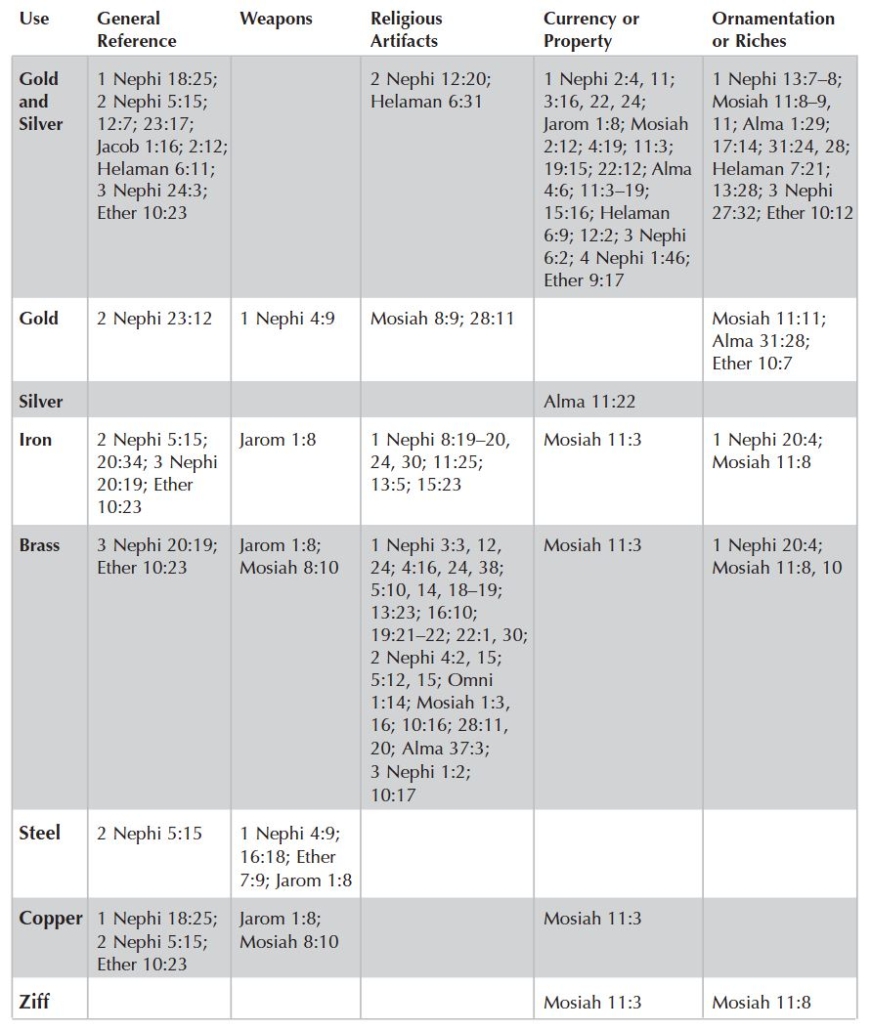
Andrew Holdaway, student of John W. Welch, Book of Mormon
121H, Brigham Young University, fall 1997. See also John L. Sorenson, “Metals and Metallurgy Relating to the Book of Mormon Text” (Provo, Utah: FARMS, 1992).
Gold, Silver & Copper
The Book of Mormon states that from the time the Nephites settled in the Land of Nephi, they began to
“work in all manner of wood, and of iron, and of copper, and of brass, and of steel, and of gold, and of silver, and of precious ores, which were in great abundance.” 2 Nephi 5:15
Both Heartland and Mesoamerican models have great evidence for all these metals. With the Heartland model having better examples of copper or brass, and Mesoamerican models having better evidence of gold and silver. As impressive as ancient and modern copper usage and mining in the Great Lakes region is, it is dwarfed in comparison to the copper mines of Arizona (where Mormon would have been writing the Book of Mormon from, and possibly projecting his understanding of metallurgy to the ancient texts he was transcribing). The Morenci Mine near Safford, Arizona is the largest copper mine in North America, followed closely by Arizona’s nearby Safford Mine and the Sierrita Mine closer to the Mexican border. Each of these mines also produce huge amounts of gold and silver known to have been mined from ancient times by the Hohokam, Anasazi and Mogollon peoples. In fact the region may possess the only evidence of Native American’s buried in a mine shaft collapse as several skeletons were found by miners about 40 feet underground near a mineralized vein of Malachite near La Sal Utah. (see Moab Man/Malachite Man).
No model, however, matches the Continental Model’s Land of Nephi in its proximity of ancient and modern mining and usage of ALL these metals in a small geographic area that matches the text’s internal geography. Oaxaca’s San Jose structural fault corridor is a gold/silver/copper volcanogenic massive sulfide (VMS) vein which spans the width of the Valley of Oaxaca supporting multiple modern and ancient mining operations. Anciently these deposits were the source of much of the unparalleled gold, silver & copper riches of Monte Alban’s ‘Tomb Seven’, often called the King Tut’s tomb of the Americas, the grave yielded over 100 precious metal artifacts including jewelry, eating vessels and masks (including several types of gold/silver alloys as well as tools such as an axe made of a copper/iron mixture). It is only one of a few un-looted finds of over 170 Egyptian-like tombs dug under Monte Alban. Even the Codex Mendoza shows that up to the conquest many of the hamlets near Oaxaca paid the Aztec capital annual tribute in gold dust, owing to the abundant gold placer deposits in the region.
South of the Valley of Oaxaca, dipping to the realm of Tototepec, lay Coatlan [which] paid the Mexica ruler gold dust and mantas. The Zapotec town of Ixtepexi, slightly north of … Coyolapan province paid its tribute in gold, green feathers, deer, maize, turkeys, firewood… A river running down from the sierra just to the north of Huaxacac [Oaxaca] reportedly carried gold. The tribute paid by this province to its Aztec overlords reflects, to some degree, the natural resources of the region. (ENE 4:142)
Specialized goods from this province consisted of annual deliveries of gold… to be delivered in the form of twenty round tiles, “the size of a medium plate and the thickness of a thumb” (Codex Mendoza folio 43v). Coyolapan was one of six roughly contiguous provinces to pay tribute in gold…
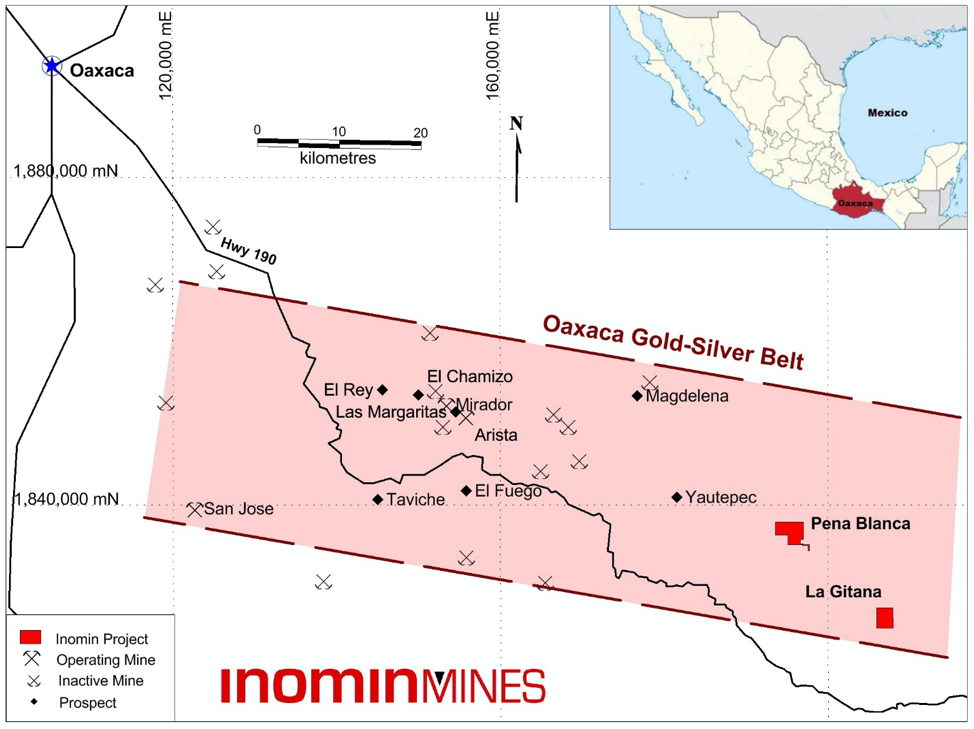
Map of Oaxaca Gold-Silver (copper) belt. Running from within the valley to approx. 20 miles southeast. from ironmines.com
Oaxaca is also one of the few places in the Americas where early iron alloys were smelted. In Tomb 7 of Monte Alban, an assortment of iron/copper alloy tools were found. (as seen in this museum display)
In fact, Oaxaca has been determined to be the source of most formative ironworking in Mesoamerica (which mostly takes the shape of ornamental hematite iron or magnetite mirrors and jewelry. Which is incredibly relevant to Book of Mormon archaeology as these types of mirrors are known to have been an important aspect of Jewish & near-eastern ritual.
Mirrors of Ancient America, (Mason, 1927)
Origins of Social Inequality, (Joyce, 2021)
Recent research on iron-ore mirrors in Mesoamerica and Central America (Menager, 2023)
Mirrors in the Bible and in Jewish Tradition (Devassy, 2018)
Magnetism and Archaeology: Magnetic Oxides in the First American Civilization (BJ Evans, UM)
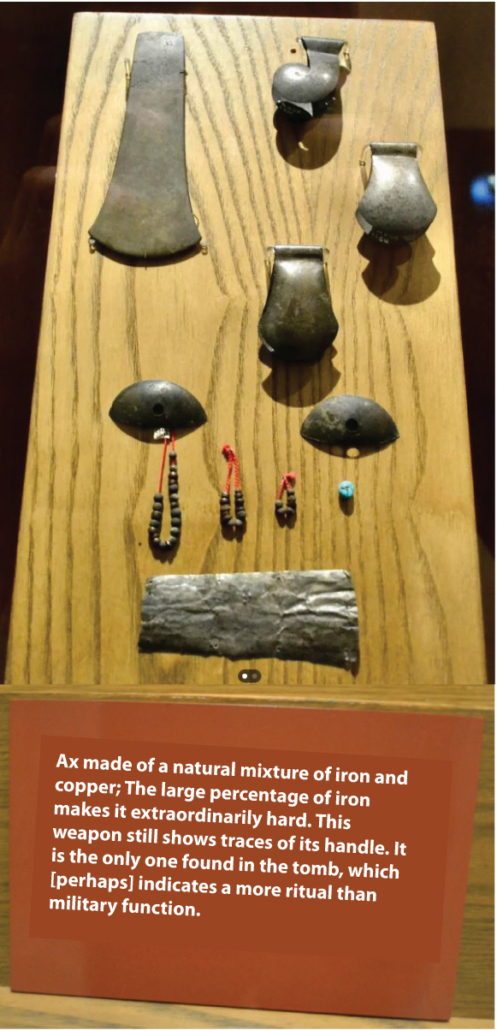
miniature axe composed of a copper and iron mixture. Zapotec culture; Oaxaca, Mexico (see link)

Paper on Mixtec silver gold alloys found in Tomb 7. Ortega, et all, 2020

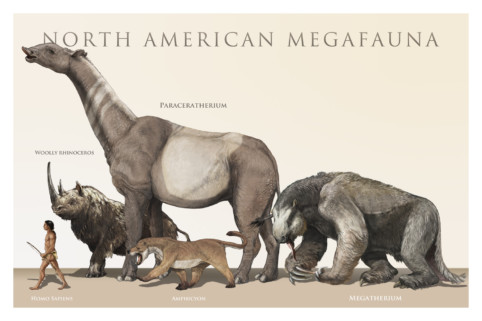
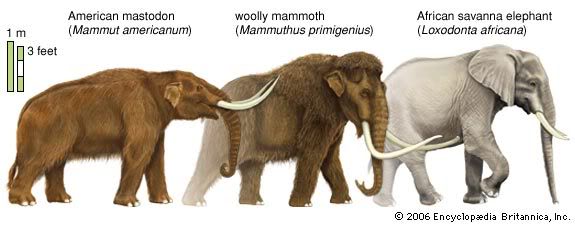

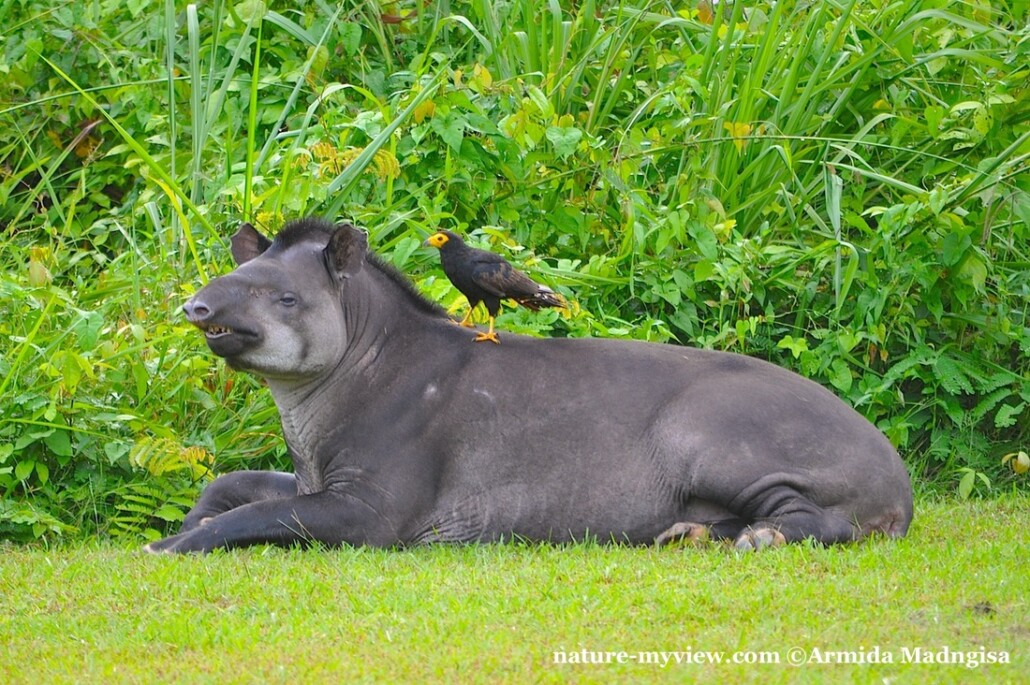
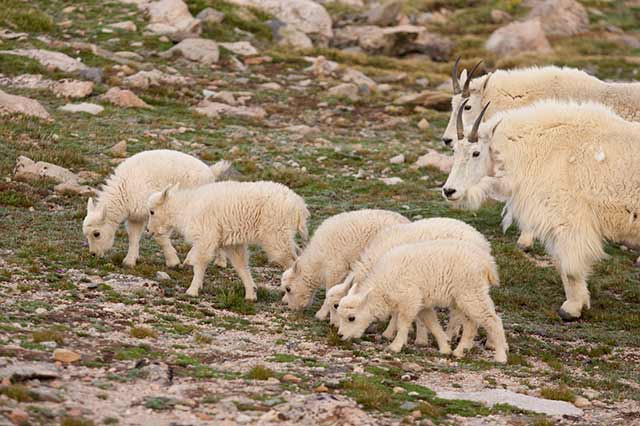
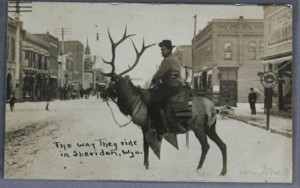

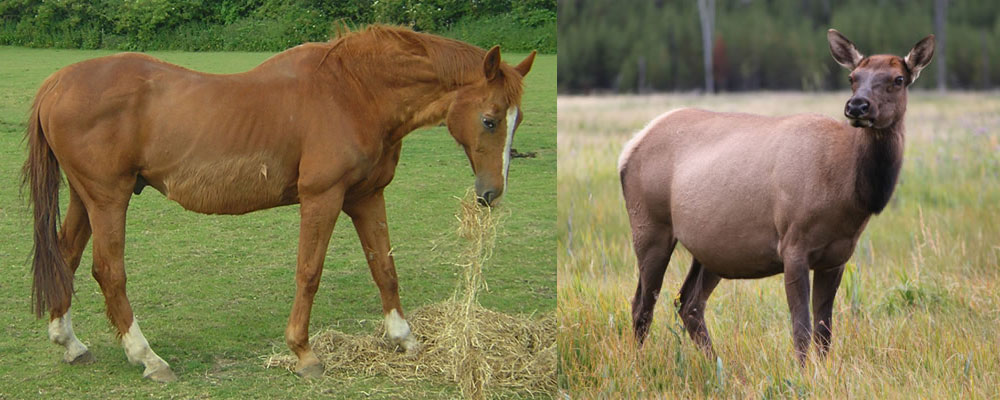
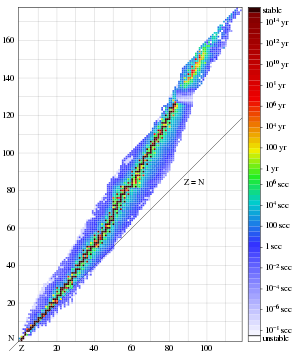
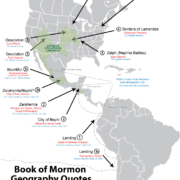
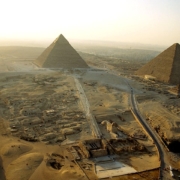
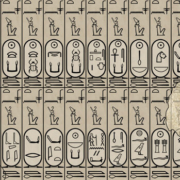
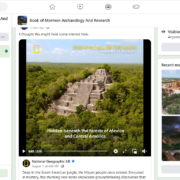
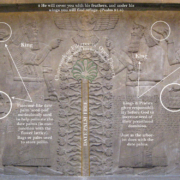
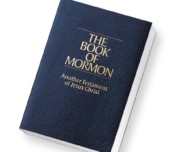
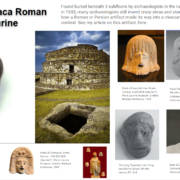


I just don’t understand the whole “loan-shift” argument to begin with. It doesn’t at all square with the official story of the BoM translation.
Here is Russel M Nelson, quoting David Whitmer, from An Address to All Believers in Christ. (Which is a whole different bag of worms)
“Joseph Smith would put the seer stone into a hat, and put his face in the hat, drawing it closely around his face to exclude the light; and in the darkness the spiritual light would shine. A piece of something resembling parchment would appear, and on that appeared the writing. One character at a time would appear, and under it was the interpretation in English. Brother Joseph would read off the English to Oliver Cowdery, who was his principal scribe, and when it was written down and repeated to Brother Joseph to see if it was correct, then it would disappear, and another character with the interpretation would appear. Thus the Book of Mormon was translated by the gift and power of God, and not by any power of man.”
Words would appear. Not vague ideas where JS would see an animal he doesn’t know so he calls it horse. Actual words. And they wouldn’t disappear until they were spelled correctly. You can’t have both a loose and a tight translation, if you are going to believe the rock and the hat ?.